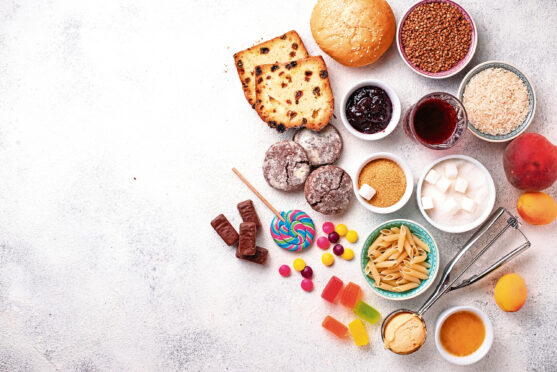
No carbs before Marbs” may have become a joke rather than a mantra (it originates from the reality TV show, TOWIE), but plenty of people still believe cutting carbohydrates from their diet is a fast route to weight loss.
Especially during summer, when there’s the prospect of stripping down to our swimwear whether the destination is Marbs (Marbella) or not.
Really, no one should feel under pressure to attain a certain body shape at any time of year – and you certainly don’t have to slim down before being ‘allowed’ to enjoy your summer holiday. But, what’s really the deal with carbs? And why do nutrition experts want you to think twice before trying to cut them from your diet?
What exactly are carbs?
One of three macronutrients (along with protein and fat), carbohydrates fall into two categories: simple (or refined) and complex.
“Refined carbs, like bread and pasta, are digested incredibly fast and this causes our blood sugar to spike,” says Melissa Snover, nutritionist and founder of Nourished. “Whereas complex carbohydrates are high in fibre, like vegetables, fruit, wholegrain bread and wholegrain pasta.”
Why do we need carbs?
Carbs play an important role within a balanced diet.
“Carbohydrates of the whole, unprocessed variety are the preferred source of energy for our body and the primary source of energy for our brain,” says nutritionist Alona Pulde from the Lifesum app. “The fibre in carbs stabilises blood sugars, while it also helps eliminate excess hormones, cholesterol, and additional toxins from our body.”
The fibre also “provides bulk, helps keep us feeling fuller longer, satisfies our hunger drive and promotes regular bowel habits,” Pulde adds.
Simple carbohydrates, on the other hand, generally offer far fewer nutritional benefits, Pulde notes. In other words, carbs are not all created equal. “Processed, junk carbs such as cookies, pastries, candy bars, chocolate bars and sodas are devoid of fibre and instead packed with calories, fat, and sugar,” says Pulde.
Why not cut carbs?
“Avoiding carbohydrates can actually hinder rather than support weight management, as it is important for those looking to lose weight to still maintain a balanced diet,” says Snover.
Instead, she suggests it’s better to up your intake of fibre-rich complex carbs: “Because these specific types of carbs help us to feel satisfied for longer, we should in theory be able to eat less overall – which can help to promote weight management.”
Pulde adds: “When we restrict carbs, we deprive our body of fuel that it needs to thrive and can experience side effects such as headache, muscle cramps, fatigue and constipation.”
Complex carbs provide a steady release of energy. This can be helpful when considering our diet overall.
“In stabilising blood sugars and maintaining satiation, we feel fuller longer and are less likely to snack or choose unhealthy foods, or give in to cravings,” says Pulde.
If you are curious about your nutrition, you might want to look at the types of carbs you’re consuming most often. No foods are inherently “bad” and there is nothing wrong with enjoying a bit of what you fancy – but it can be beneficial to keep intake of refined, processed carbs in balance.
“In essence, they are junk foods that are man-made to have us craving more and over-eating regularly,” says Pulde. “Instead, eat a variety of fruits, vegetables, starchy vegetables, whole grains and legumes.
“These are low-calorie, low-fat, high fibre, and high nutrient foods that will satisfy your stomach and taste buds, shut off your hunger signals appropriately to prevent over-eating and keep you fuller for longer.”

Enjoy the convenience of having The Sunday Post delivered as a digital ePaper straight to your smartphone, tablet or computer.
Subscribe for only £5.49 a month and enjoy all the benefits of the printed paper as a digital replica.
Subscribe